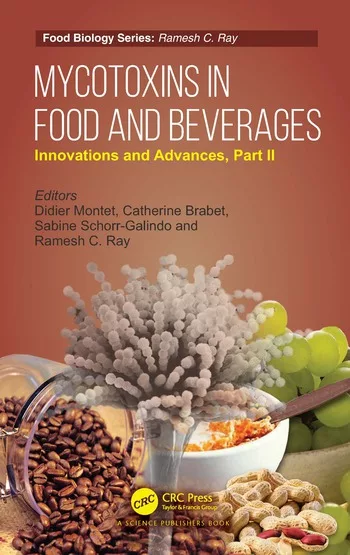Iced coffee sales boost interest in cold-brew coffee extracts
Ingredient suppliers use fruit pairings to enhance iced coffee flavor
Although many people might not enjoy cold weather — especially as many parts of the country have faced multiple rounds of cold temperatures and snow this winter — data are showing that consumers do enjoy cold coffee. According to Chicago-based Mintel, cold-served coffee’s share of all coffee on U.S. restaurant and coffeehouse menus jumped from 19 percent in 2009 to 24 percent in the first quarter of 2013.
“Cold coffee, especially frozen-blended, has become very trendy in major U.S. cities such as New York, but it is more than just a momentary fad,” said Jonny Forsyth, global drinks analyst at Mintel, in a statement. “Its usage has been building for the last few years and actually reflects the changing tastes of the younger generation.”
Approximately 20 percent of U.S. consumers drink iced coffee, compared with 83 percent of U.S. consumers drinking any type of coffee, according to data from Mintel and the National Coffee Association, New York.
As a result, beverage ingredient suppliers have noted this increased interest in iced coffees and are responding accordingly. Kevin L. Goodner, product manager of extracts and essences, and Angela Lantman, applications manager of coffee and tea, of Wauconda, Ill.-based Synergy Flavors both affirm that iced coffee currently is one of the company’s “hot” items, as it has received multiple requests for such products in the last year. As the popularity for iced coffee has increased, so has the interest in coffee ingredients, Goodner notes.
Extract-ly
To make some of these cold products, beverage-makers are turning to cold-brew extracts, says Scott Geringer, vice president of extracts and ingredients at S&D Coffee & Tea, Concord, N.C. “Cold-brew extraction delivers a less acidic liquid coffee and a more balanced profile,” he explains. “For straight iced coffee beverage development, the use of cold brew extracts is a means of producing a more ‘drinkable’ product that expands the traditional consumer base.” Flavored, dairy-based iced coffees and frappes also use coffee extracts, Geringer notes.
In general, liquid coffee extracts are used most often by beverage companies because of their familiar format, says Hilary Hursh, research and development supervisor at Autocrat LLC, Lincoln, R.I. As many companies are accustomed to handling liquids, liquid extracts tend to be easier for them to use in formulations, she says. The liquid coffee extract also provides more of a fresh-brewed coffee profile because it is less processed than other ingredient formats, such as spray-dried coffee, she adds.
Amelia Bay specializes in “brewed quality” liquid extracts for the coffee segment of its business, notes John Harper Crandall, vice president of sales and marketing for the Johns Creek, Ga.-based company. These extracts can be derived from any type of bean or roast and for-mulated to specified natural caffeine levels to appeal to different consumer need states, he explains. “If you are creating a foodservice product for hospitals, for instance, going caffeine free might be a great idea that would appeal to the dietary planning team that makes a lot of the decisions,” he says. “On the other hand, if you are going for authenticity, a great, balanced product could be the way to go. Finally, if you are going for a niche product, perhaps slightly higher levels of caffeine would be the way to go.”
Perfect pairings
Beyond customizing caffeine levels, coffee can be mixed with other ingredients to customize flavor profiles to appeal to different consumer demographics. According to Mintel, consumers in the age 18-24 demographic group are the largest iced coffee consumers, with
38 percent of this group consuming the cold beverage. “This new cohort crave[s] indulgence and [has] grown up drinking sweet-tasting, refreshing soft drinks,” Mintel’s Forsyth said in a statement. As such, these consumers are looking for sweet flavors in their coffee drinks as well, he added.
Amelia Bay’s Crandall notes that the company often receives customer requests for added flavors including hazelnut, vanilla, mocha and even salted caramel.
In general, the coffee category tends to stick with these sweet brown flavors for enhancing the beverages, Synergy’s Lantman notes. “Coffee can be difficult to flavor, and people tend to stick with what they know and like when it comes to flavored coffee, so I don’t think we will see any big changes.”
However, Autocrat’s Hursh says the coffee extracts supplier has found that coffee also pairs well with fruit and spice flavors. “Coffee is often paired with cinnamon — it’s traditional in Mexico to have that flavor pairing with brown sugar,” she explains. In Italy, espressos often are paired with lemon, she adds. Drawing on these international flavor trends, the company is experimenting with mainstream U.S. fruits, including citrus fruits like oranges and lemons as well as berries, for new flavor pairings, she explains.
When pairing fruit or other flavors with coffee, the roast level can affect the finished product, Hursh says. “If I would pair the coffee with the fruit, I would take into consideration the roast level of the coffee,” she explains. “I would find that a darker coffee would pair better with the sweet, indulgent flavors, whereas a lighter roast would probably pair better with the fruit flavors.”
As the industry further experiments with flavor pairings, coffee ingredient suppliers and beverage-makers will be able to craft more iced coffees to appeal to consumers thirsting for sweet-tasting drinks.
Looking for a reprint of this article?
From high-res PDFs to custom plaques, order your copy today!




